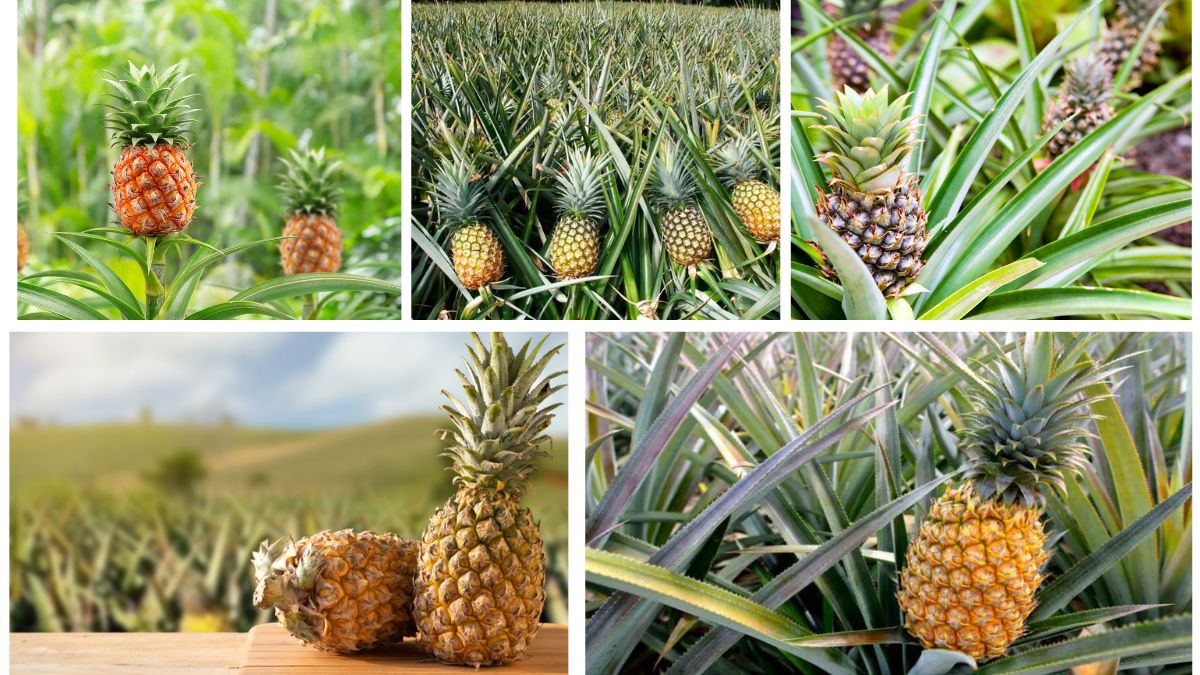Pineapples are one of the most iconic tropical fruits—sweet, tangy, and refreshing. While you might think of them as an exotic crop that requires professional farming, the truth is you can grow pineapples right at home using nothing more than the leafy crown, or “top,” of the fruit you buy at the market.
This simple method, often called propagation from tops, is one of the easiest and most fun ways to start your own tropical garden. Whether you live in a warm climate or want to grow them indoors in containers, growing pineapples from tops is a rewarding project that blends sustainability, creativity, and gardening joy.
In this article, we’ll explore in detail how to grow pineapples from tops, the conditions they thrive in, step-by-step instructions, and tips to ensure a healthy and fruitful harvest.
Why Grow Pineapples from Tops?
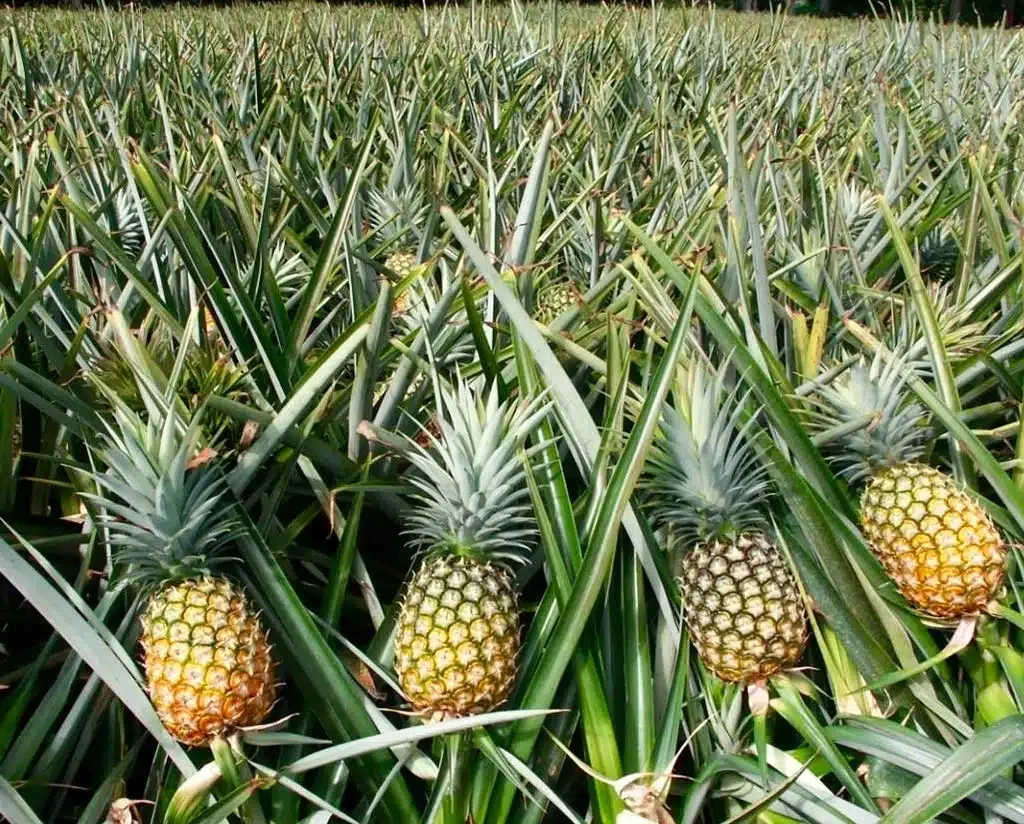
Growing pineapples from tops is both practical and enjoyable. Here are some reasons to give it a try:
- Sustainability – Instead of discarding the crown of your pineapple, you can recycle it to create a new plant.
- Accessibility – No need for seeds or specialized equipment; the top of a store-bought pineapple is all you need.
- Decorative Value – Pineapples have striking, spiky foliage that looks beautiful indoors or outdoors, even before they produce fruit.
- Fun and Educational – Great for kids and beginners, as it demonstrates how plants regenerate and grow.
- Fresh Harvest – Eventually, your plant may reward you with homegrown pineapples, which are sweeter and fresher than anything from the store.
Understanding the Pineapple Plant
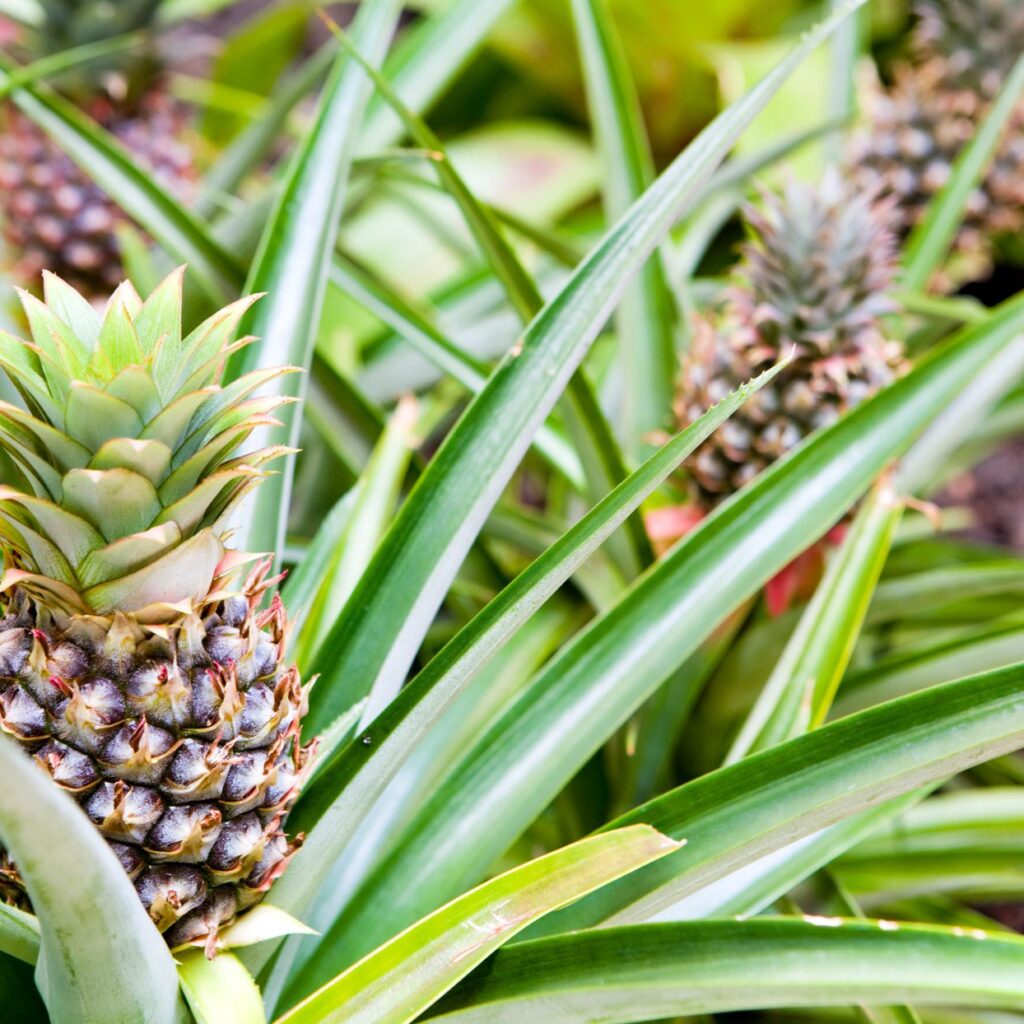
Before diving into the steps, it’s useful to understand a little about the pineapple itself. Pineapples (Ananas comosus) are tropical perennials belonging to the bromeliad family. Unlike trees or shrubs, pineapples grow as low rosettes of spiky leaves.
- Growth Habit: They grow slowly, usually taking 18–24 months to produce a mature fruit.
- Climate Needs: They prefer warm temperatures (65–95°F / 18–35°C) and cannot tolerate frost.
- Root System: Their roots are shallow, so they do well in containers or garden beds with good drainage.
Step-by-Step Guide to Growing Pineapples from Tops
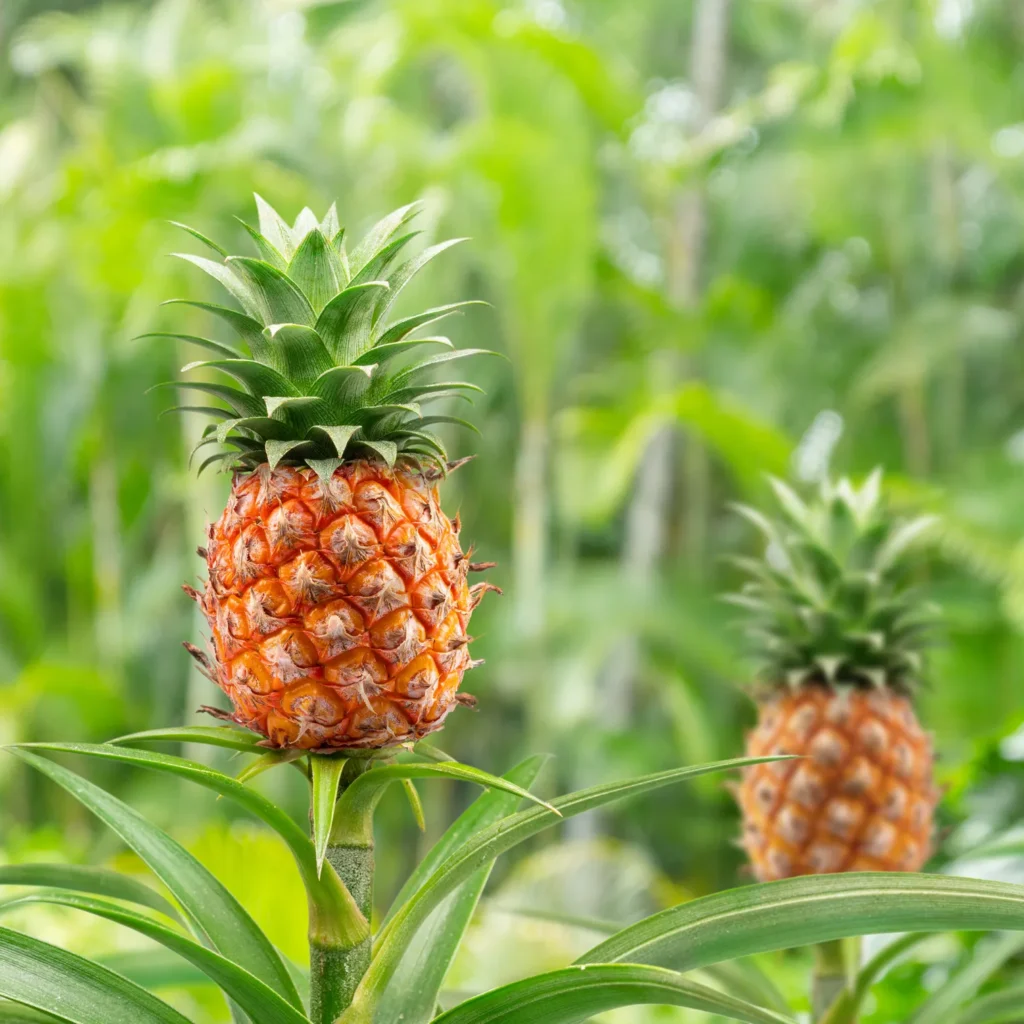
Step 1: Select a Healthy Pineapple
Start with a fresh pineapple from the market. Look for these features:
- A green, healthy crown with firm leaves (avoid brown, wilted, or rotting tops).
- A fruit that is ripe but not overripe.
- Avoid crowns with signs of pests or disease.
Step 2: Prepare the Pineapple Top
- Twist or cut off the crown. If cutting, leave about an inch of fruit flesh attached.
- Trim away extra fruit flesh, as it can rot when planted.
- Peel off 1–2 layers of lower leaves to expose the small root buds at the base.
- Allow the crown to dry for 1–2 days in a shaded area. This helps heal cuts and prevents rotting.
Step 3: Root the Pineapple Crown
You can root your pineapple top in water or soil:
- Water Method:
- Place the crown in a jar of water, ensuring only the base is submerged.
- Change water every 2–3 days.
- Roots will appear in 2–3 weeks.
- Soil Method:
- Plant the crown directly in a pot filled with well-draining soil (such as sandy or cactus mix).
- Water lightly, keeping the soil moist but not soggy.
- New roots will form within a few weeks.
Step 4: Potting and Placement
Once roots have developed (about 1–2 inches long), transfer the crown into a larger container or directly into the garden.
- Container Growing: Use a pot at least 8–12 inches wide. Ensure it has drainage holes.
- Garden Planting: Choose a sunny spot with sandy, well-drained soil.
Step 5: Care and Maintenance
Sunlight
Pineapples thrive in full sun, ideally 6–8 hours per day. Indoors, place them near a bright window or use grow lights.
Watering
- Water thoroughly once the top inch of soil feels dry.
- Do not let water pool around the base, as pineapples are prone to rot.
- In hot climates, misting the leaves occasionally helps maintain humidity.
Soil and Fertilization
- Pineapples prefer slightly acidic soil (pH 4.5–6.5).
- Fertilize monthly during the growing season with a balanced liquid fertilizer or organic compost.
- Foliar feeding (spraying diluted fertilizer on the leaves) also benefits growth.
Temperature and Climate
- Keep plants above 60°F (15°C).
- In colder regions, bring potted pineapples indoors during winter.
How Long Until You Get Fruit?
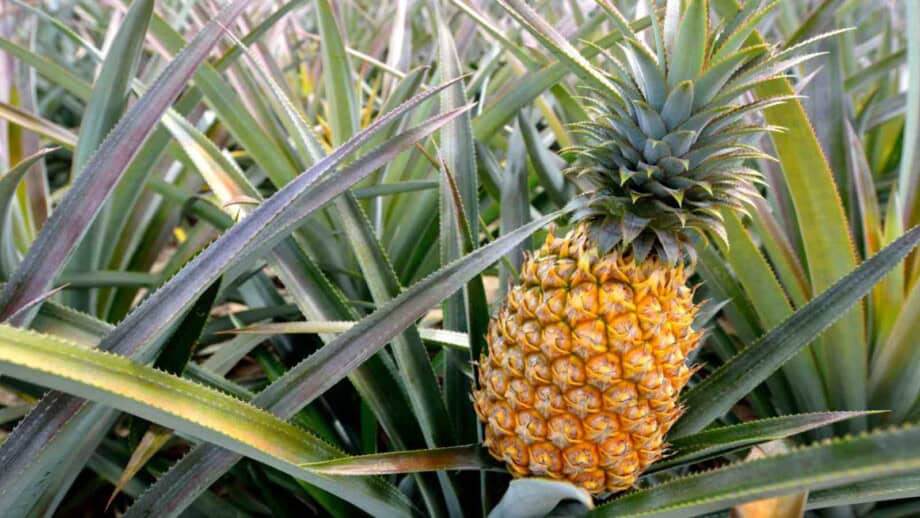
Patience is key! Pineapples grown from tops usually take 18–24 months to produce fruit. The process typically follows these stages:
- First 6–8 Months – Root growth and establishment.
- Next 8–12 Months – Strong leaf growth and formation of a mature rosette.
- Final 6–8 Months – Flowering begins, followed by fruit development.
The fruit grows at the center of the plant, starting as a small red or purple flower spike. Over time, it swells into the familiar pineapple fruit.
Tips for Successful Pineapple Growth
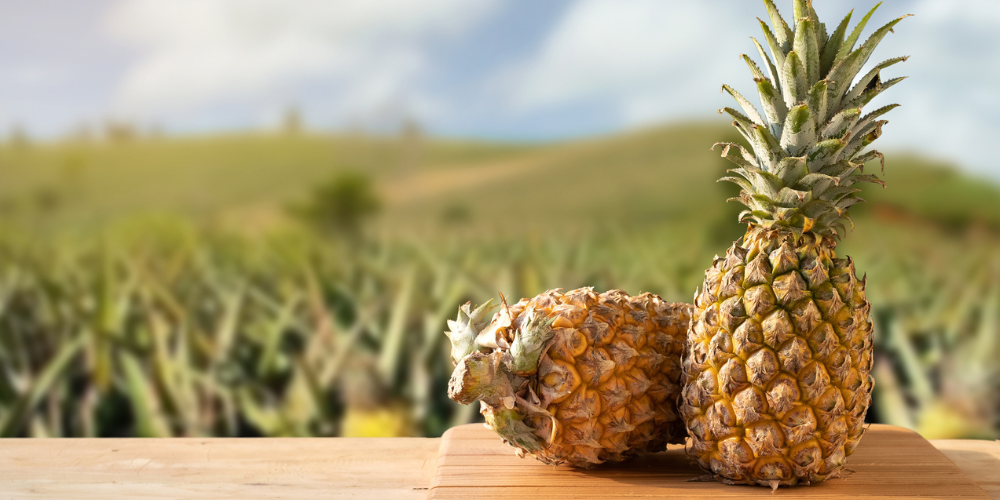
- Choose multiple crowns – Grow several plants at once for better chances of fruiting.
- Be patient – Don’t expect quick results; pineapples are slow growers.
- Don’t overwater – The number one mistake is giving too much water.
- Encourage flowering – If your plant is mature but not producing, you can place a ripe apple or banana next to it under a plastic bag for a week. The ethylene gas stimulates flowering.
- Protect from frost – Pineapples are tropical and can die in freezing temperatures.
Benefits of Growing Pineapples at Home
- Aesthetic Appeal: Pineapple plants are attractive, with their spiky leaves adding a tropical vibe to gardens or patios.
- Cost-Effective: One store-bought pineapple can give you multiple plants over time.
- Educational Value: Great way to learn about plant propagation and fruit development.
- Health Benefits: Eventually, you’ll harvest a homegrown fruit rich in vitamin C, antioxidants, and digestive enzymes.
- Sustainability: Encourages reusing food scraps and reducing waste.
Common Problems and Solutions
- Yellowing Leaves: Usually caused by overwatering or poor drainage. Fix by reducing water and checking soil conditions.
- Root Rot: Happens when crowns are planted too deeply or soil stays soggy. Always allow crowns to dry before planting.
- Slow Growth: May indicate lack of sunlight or nutrients. Ensure full sun exposure and regular feeding.
- No Fruit Formation: The plant may be too young, or lacking ethylene stimulation. Use the apple/banana trick to trigger flowering.
Conclusion
Growing pineapples from tops is a fun, eco-friendly, and rewarding gardening project. With patience and care, you can transform kitchen scraps into thriving tropical plants that not only beautify your garden but also yield delicious fruits.
From preparing the crown to nurturing it through months of steady growth, this process teaches the value of sustainability and perseverance in gardening. Even if your pineapple plant takes two years to bear fruit, the journey itself—watching leaves sprout, roots strengthen, and eventually a fruit emerge—is deeply satisfying.
So, next time you enjoy a juicy pineapple, don’t throw away the crown—plant it! With a little effort, you’ll soon have your very own piece of the tropics growing right at home.
